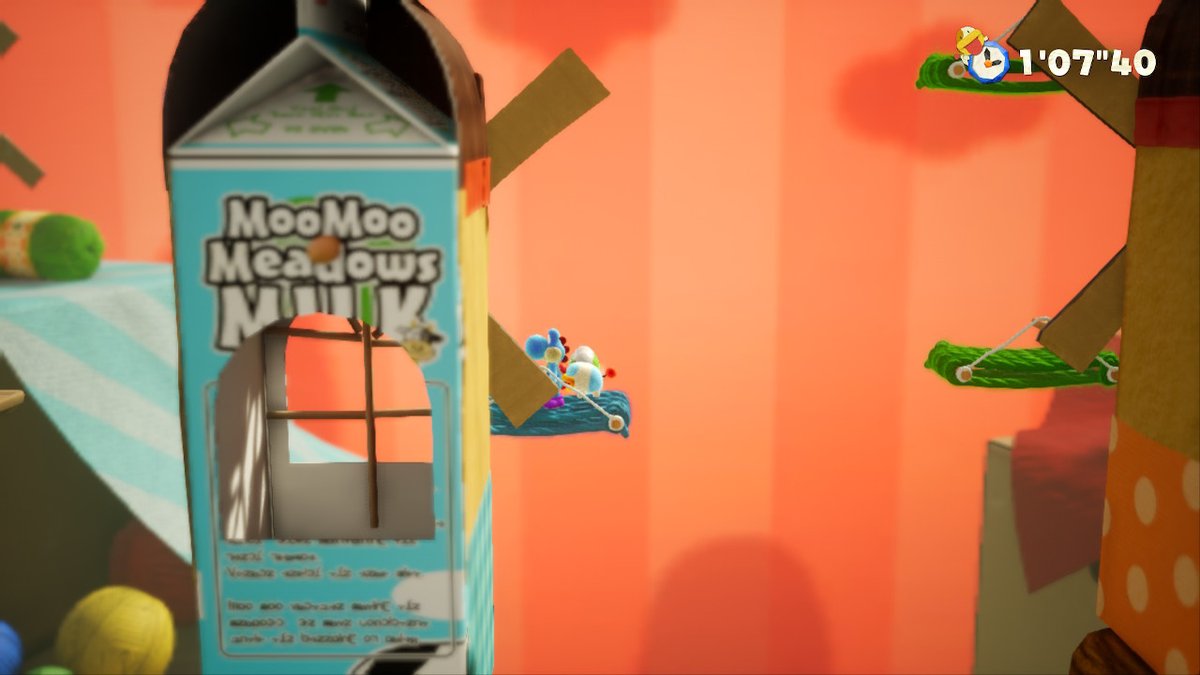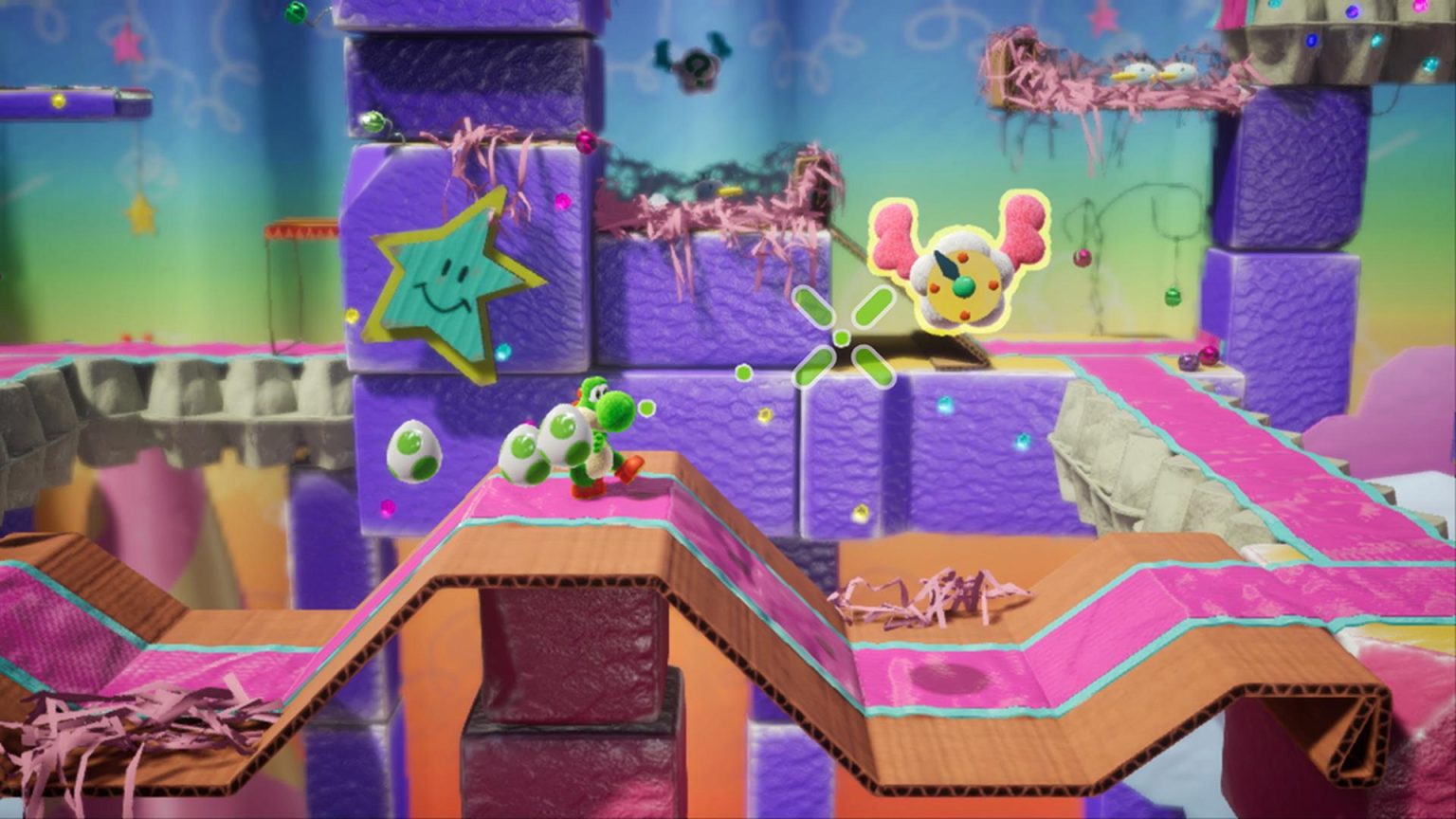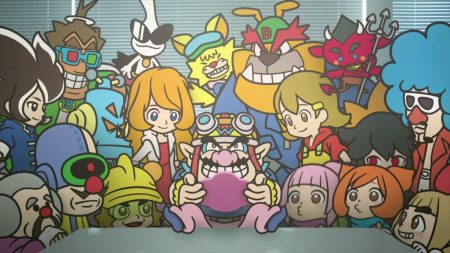A Whole New World
Yoshi’s Crafted World is not merely another well-crafted (get it?) Nintendo platformer with clever level design, uplifting music, and plenty of extras to collect along the way; it’s the truest imagining of childhood play in video games since Minecraft. The latest entry from developer Good-Feel reminds me not just of the various clay sculptures and cardboard houses I played with as a kid, but of how I used such items in tandem with the various Star Wars and superhero action figures I owned to create wide-ranging and imaginative playtime scenarios.
Traveling through each set-piece found in Yoshi’s Crafted World is nothing short of a delight, as fun and engaging platforming gameplay is underscored by an incredible devotion to joyous craftsmanship and a remarkably uplifting soundtrack. Every stage has a clear identity: For example, one level takes on a nautical theme with painted cardboard whales and balsa wood pirate ships, while another presents a ninja-themed environment with parchment paper sliding doors and mini-pinwheel shurikens. While the core platforming gameplay is largely similar to that of previous Yoshi titles, the game’s presentation oozes with character and ingenuity, as even the most detailed and animated of enemies and diorama-like set-pieces look handcrafted, as if to be shown at a child’s art show.
While some levels fall flat of such ambition (I don’t need more killer clown dolls in my life), the overall feel of Yoshi’s Crafted World is one of joy and excitement, with every aspect of the experience celebrating the wonders of creation and imagination. The world intentionally appears fabricated, but feels so alive.

I’m Getting Papier-Mâché
The charmingly unique art style and world-building of Yoshi’s Crafted World marks the proper evolution of video game visuals, as the game chooses to make fake objects out of real-world materials instead of “real” objects from fake, video-gamey assets. Rather than use the right set of polygons and shaders to make something appear as a tree or a bird, the latest in the Yoshi canon presents giant robots, magical gemstones, enormous cupcakes, and rainbow-trailblazing rocket ships that look like they were made from various materials found in an art teacher’s closet.
The heightened sense of realism from such objects — which are constructed with so much care that things like metal cans and cartons (presented as towers or houses) have fake brand names and even nutritional information written on them — evokes a sense of childhood wonder, where simple household items serve as the imaginational backdrop for the adventures of one’s toys. Unlike its predecessor, Yoshi’s Woolly World, which was largely limited to yarn, sequins, and felt, Crafted World beautifully presents locales built from papier-mâché, cardboard, cans, egg cartons, paper cups, rubber bands, lumps of clay, and anything else found in a common home. What results from this is one of the prettiest and most pleasant games Nintendo has ever put its name on, as the art direction of each stage is so creative and colorful that you’ll sometimes forget you’re looking at a bunch of paper planes and pipe cleaners.
Beyond the incredible visuals, players will find a mostly familiar platformer, though one that deftly transitions between 2D and 3D mechanics, similar to the way Donkey Kong Country Returns did. However, the ability to throw eggs at objects and enemies in multiple dimensions allows for some especially thoughtful puzzles. Getting from one end of a level to another is mostly an undaunting task, but finding all the red coins, smiling face flowers, and other secrets in each stage requires a degree of wanderlust, guile, and sharpshooting (you’ll throw a LOT of eggs in this one) not found in previous entries in the franchise. In addition, the visual art style and the 2.5D mechanics work wonderfully in tandem with one another, which is best exemplified by how often the player must throw an egg at a rolled up piece of construction paper or a wobbly cardboard structure to open up a new pathway connecting two parallel roads. In its presentation and its creativity, Yoshi’s Crafted World demonstrates the logical next step in the platformer genre, where backdrops are no longer just window dressing; they’re an active part of the gameplay experience.

Plenty to Collect!
Much like any other Yoshi game, Crafted World emphasizes finding collectibles in each level that help unlock new content later in the game. The latest Switch release, however, puts a premium on finding smiley flowers, as they have become the title’s currency for advancing through the story. Players must exchange certain amounts of smiley flowers before proceeding to the next set of levels, and while this may seem frustrating for those who don’t wish to spend time chasing collectibles, the game gives the player plenty of new ways to collect the darn things. Besides the 5-10 flowers found individually in each level, players can earn another flower by collecting 100 coins, one for ending the level with full health, and one for collecting each stage’s 20 red coins.
In addition, Yoshi’s Crafted World introduces two new methods of gathering such flowers that not only enhance the title’s replay value but add new challenges for players hoping for some evolution in the series. The first involves certain NPCs tasking the player with finding specific objects in certain levels in exchange for flowers. For example, someone will ask Yoshi to go back to the first level and “collect” (or just throw eggs at) five different cardboard cows. Tons of stages have cleverly-crafted objects like these (such as a flounder made from a paper plate and googly eyes), and they turn each level into a delightful little scavenger hunt.
The second of such new challenges involves Yoshi going through the “flip side” of each level — where the stage is rotated 180 degrees, letting you travel through the level backwards — and finding three poochy pups. If you find the three little dogs and bring them to the end of the level within a certain time limit, you could earn up to four flowers. Such challenges aren’t especially difficult, but they’re certainly fun, and they give each level added depth. Players can not only find new pathways and rooms that were unavailable before, but they can see how each craft is held together, further exposing levels of visual detail. Also, the little doggos are adorable as heck, and that’s enough motivation for me.

It’s Mostly Easy, But Who Cares?
The more “hardcore” crowd will likely scoff at the notion of purchasing and playing a game as jubilant and as child-friendly as Yoshi’s Crafted World, and I can’t deny that it is a largely simple affair from a gameplay perspective. You won’t be dying constantly like you would in a FromSoftware title, and death comes with little consequence, as each level has multiple checkpoints and the player has unlimited lives. Also, if I’m being honest, even the tougher main levels found in the game only appear that way if you, like me, insist on combing each stage for every little collectible as you play. The boss battles are sometimes laughably straightforward, and the scavenger hunts amount to simply using your eyes for the most part. Yoshi’s Crafted World is a mostly easy game with a presentation meant to attract a younger audience.
But why is that bad? Why can’t gamers just enjoy a cheerful stroll through wonderfully crafted worlds without the anxiety of having to “git gud”? Why is it wrong to want to avoid manufactured challenges, especially considering the real challenges of life? Why does a “game made for kids” immediately make “real” gamers bristle in horror?
It’s fine if a game like Yoshi’s Crafted World isn’t your thing. It doesn’t have to be. But the way so many gamers view easy or hyper-cheerful games as a negative is more of an indictment on video game culture as a whole than it is on the games themselves and the people who love them. To miss out on an experience like Yoshi’s Crafted World because it doesn’t fit the hardcore gaming mold would frankly be a mistake. Not every game has to be a gritty bloodfest that wants to kick your ass. Some of them should encourage you to view the world through a brighter lens.
Besides, the Hidden Hills stages unlocked after beating the main story are legitimately tough, so it’s not like anyone searching for a real challenge will find none in Yoshi’s Crafted World.
(Author’s note: I know this whole section might seem like a straw man argument, but I swear to you I see comments and tweets about people wanting to skip games like this one because it looks too easy and childish. As evidence, just look at the discussion people are currently having about difficulty in games with regards to Sekiro: Shadows Die Twice.)

Closing Thoughts
For the most part, Yoshi’s Crafted World plays the role of a typical sequel, leaning on recognizable mechanics, models, and even sound effects. Yet where it mostly stagnates in gameplay it advances in presentation, which elevates an already solid platformer into an original and worthwhile endeavor. Short as it is (you can complete the main story in about five hours), every minute of Yoshi’s Crafted World teems with spunk and vivacity — a welcome injection of sparkle and joy in an otherwise bland first half of the year gaming-wise. It would be hard for even the most stone cold of gamers to emerge from a session of Yoshi’s Crafted World without at least a grin, if not a full-blown smile.
Score: 9.0/10
Sam has been playing video games since his earliest years and has been writing about them since 2016. He’s a big fan of Nintendo games and complaining about The Last of Us Part II. You either agree wholeheartedly with his opinions or despise them. There is no in between.
A lifelong New Yorker, Sam views gaming as far more than a silly little pastime, and hopes though critical analysis and in-depth reviews to better understand the medium's artistic merit.
Twitter: @sam_martinelli.










